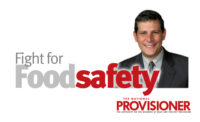As 2015 comes to a close it is time to start thinking about 2016. December is typically a very busy month so set aside some time in the first two weeks of January to plan for 2016. Make an appointment with yourself; schedule it on your calendar.
When you sit down to start planning for 2016 the first thing on your list to do is reflect on 2015. Was it a good year? What were your successes and failures? What did you not accomplish that you wish you had?
In the planning process for 2016 there are several areas that you should consider;
- Employee training
- Plant improvement plan
- Product/services list
- Marketing program
The most valuable asset you have is your employees. Training helps improve an employee’s self-esteem and their commitment to doing a good job. I suggest having monthly training sessions. They do not need to be long. You can hold a 30 minute training program during lunch or an extended break. You might even consider furnishing lunch or snacks during the training session. It is important to remember that many food safety problems are the result of employees not understanding the correct procedures or not understanding the consequences of doing something incorrectly. Minimize food safety problems by having a well-trained work force.
All plants should have a Plant Improvement Plan (PIP). A PIP is a written plan in which you outline a schedule you intend to follow to maintain your operation in good condition. You should have a PIP for both your building(s) and equipment. It should contain things you plan to address in the next year and in the next 5-10 years. Having a PIP helps you plan for the future, keep your building(s) in good repair, operate at maximum efficiency and assure company longevity.
Review the list of services you provide your customers and the list of products you produce. Look at these things very critically and without emotion. Think about what it costs you to perform each service and produce each product. You may be surprised to learn what things you do that are profitable and which yield little or no return. Consider eliminating unprofitable services or products or identify ways to make them profitable. Frequently when a company expands their list of services and products they fail to eliminate items that are unprofitable.
One of the very important keys to success is marketing. In many markets the most popular products are not necessarily the best products but rather the products with the best marketing. If you have won awards in cured meat competitions, make sure to mention that as part of your marketing. Also, if you have received recognition for community service, mention that in your marketing. Many small meat processors make very effective use of the internet and email as part of their marketing. Monthly emails (to customers that request them) is an excellent way of advertising. Many companies also use social media, such as Facebook, to market their products. Don’t be afraid to experiment with new ideas.
Set goals in each area and then pledge to yourself that at the end of each quarter you will take the time to assess your progress toward your goals. At the end of March, June, September and December 2016 make an appointment with yourself to review your progress toward achieving your 2016 goals.
Remember you cannot achieve goals that you do not have. Plan for success in 2016!




Report Abusive Comment